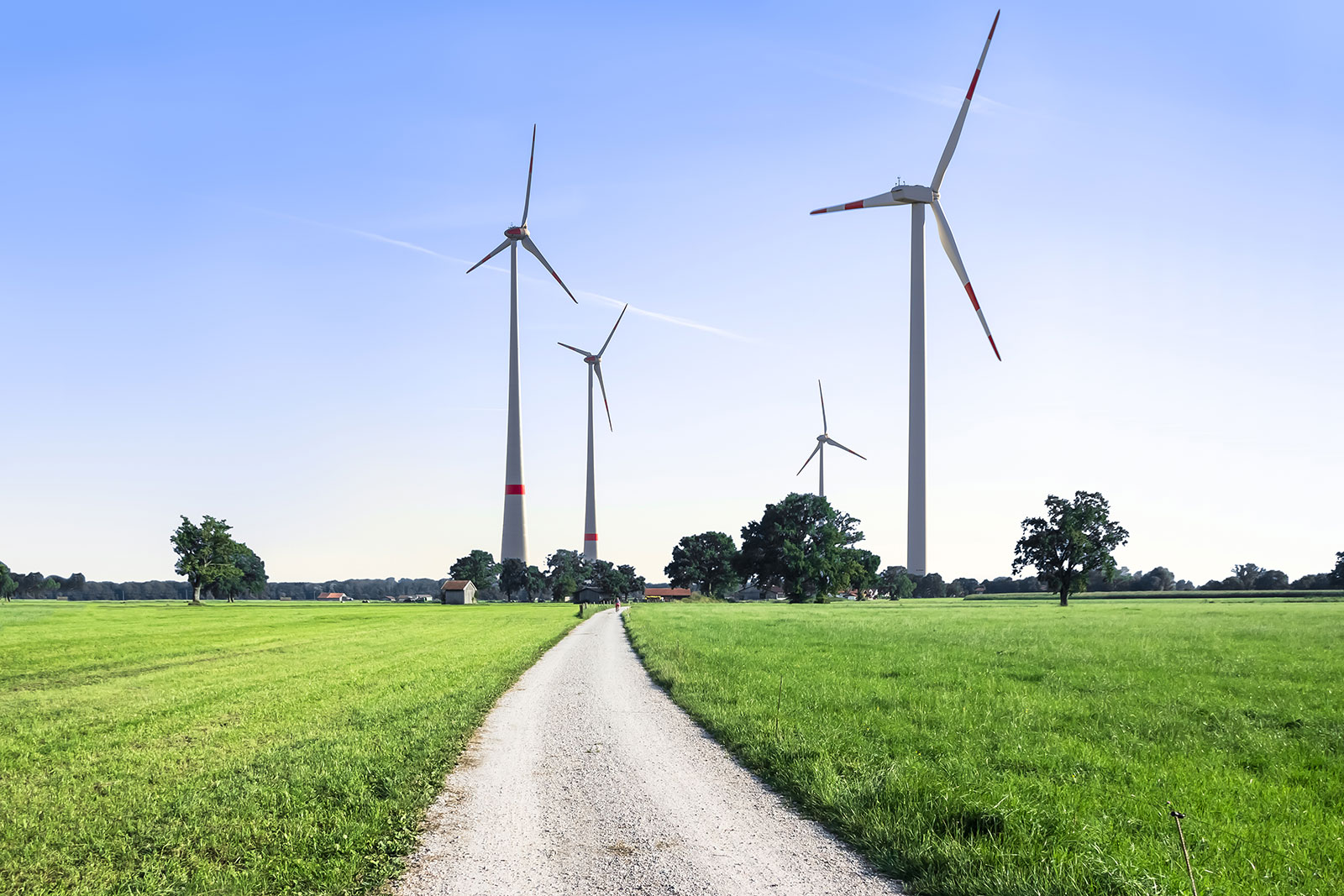Green bonds offer lessons for sustainable finance

Green bonds, launched by the World Bank and the European Investment Bank more than a decade ago, blazed a trail for investments that could eventually reach into trillions of dollars in climate-related projects, including renewable energy, energy efficiency, and ecosystem protection and restoration.
Their central, foundational role provides lessons and warnings for the global community as it expands sustainable finance with ever-greater urgency into diverse areas such as complex collateralized loan obligations, loan and local currency guarantees, and subordinated debt.
The initial challenge was far more daunting than developing a bond prototype tied to environmental impact. It was to create a new class of securities that would be credible, replicable, and attractive to institutional investors and environmental organizations alike.
Along those dimensions, the founders of the green bond movement have undoubtedly succeeded. The Climate Bonds Initiative (CBI) stated in its 2018 report that from 2008 to 2018, dozens of institutions and governments issued more than $521 billion in green bonds. In the first half of 2019 alone, new certified green bond issues topped $100 billion globally, and forecasts for the full year are as high as $250 billion, according to Environment + Energy Leader. More than 5,000 green bond issues will have come to market by the end of 2019, estimates CBI. So there is no question that the market for green bonds has proved to be robust, durable, and scalable for a diverse array of market players worldwide.
Kenneth Lay, senior managing director at RockCreek, who as treasurer of the World Bank led the team that developed the first green bonds, says that earmarking bond issue proceeds for specific climate and environment-related projects was a major change “that carried the potential to attract new, impact-oriented investors and boost incentives within the Bank to focus on these key public goods.”
He adds: “That potential is being realized, perhaps not as quickly as we all would like, but the progress has been dramatic in the decade since.”
Another major challenge, which will continue to bedevil all forms of sustainable finance, has been to ensure that the environmental impact of green bond projects is transparent, verifiable, measurable, and compliant with international standards.
From the start, the World Bank developed a rigorous and transparent model for verifying its green bond issues. Several robust and influential frameworks and protocols have emerged to guide investors and issuers. CBI, launched in 2010, published its Climate Bonds Standard and Certification Scheme the same year. The Loan Market Association notes that the International Capital Markets Association (ICMA), founded in 1969 to help guide the emerging Eurobond market, gradually expanded its scope to include a set of green loan principles in 2014. Both voluntary frameworks gain their authority by assembling teams of top scientists and leaders to develop and promote rigorous standards and by winning the endorsement of a critical mass of issuers and investors. Despite competing national standards and the absence of strong compliance mechanisms for bond issuance, ICMA and CBI have tailored most green bond issues to clear metrics and ensured that projects deliver relevant benefits.
Of course, compliance with standards such as those of ICMA and CBI must be independently verified. The internal incentives of asset owners are insufficient. Leading firms such as CICERO and Sustainalytics have conducted external reviews of more than 88 percent of the 5,000 bonds labeled as green by CBI. Such labeling means that at least 95 percent of proceeds go to environmental uses and that underresearched and controversial areas are excluded. These reviews, along with advance vetting of environmentally focused issuers, have ensured that the assets backing bonds meeting ICMA and CBI minimum requirements are indeed green—along with the majority of funds invested in the bonds.
Dubious players
That hasn’t stopped dubious players from entering the market. From “clean
coal” projects in China to bonds sold by Spanish oil company Repsol,
issuers have blurred or obliterated the lines between
sustainable and nonsustainable projects. The backlash against such projects
has sparked a more robust debate about the need for more precise
definitions of the types of investments that contribute to sustainability
and how much.
Investors who adhere to the ICMA or CBI guidelines can be confident that they are supporting low-emission infrastructure and deep emission reduction—perhaps to a fault. For example, to avoid controversy, certification to the highest CBI standards skirts climate-relevant and investable areas such as nuclear energy and issues such as air travel, which accounts for 2 percent of the global carbon intensity of emissions—and growing. What is more, methodical, sector-by-sector analysis takes time. The agencies have only recently explored frameworks for industries such as cement and steel, which together contribute 15 to 17 percent of global carbon dioxide emissions but are essential to building the infrastructure to shift from “brown to green” and to adapt to climate change, such as through electric-vehicle charging stations and floodwalls in low-lying areas.
The growing scale, complexity, and diversity of green bonds, and the green investments that have followed in their wake, may yet pose the most significant challenge for sustainable finance. The Global Sustainable Investment Alliance estimated that $30.7 trillion in institutional assets across the world were invested in sustainable; environmental, social, and governance–focused; or green products in six major markets—the Australia, Canada, Europe, Japan, New Zealand, and the United States—at the beginning of 2018. That is an increase of 34 percent since 2016. “Blue bonds,” as defined by the World Bank, fund coastal restoration, marine biodiversity, sustainable fisheries, and pollution control. “Humanitarian bonds” target pandemic disease and migration. Meanwhile, specialized issuers such as the International Finance Facility for Immunisation have emerged. Many organizations tracking green finance also follow the broader set of so-called labeled impact bonds, a combined market with an estimated value of up to $1.45 trillion as of 2018.
Sustainable finance may be experiencing a golden age of innovation. New securities and investment structures are emerging with each passing year. The question is whether such creativity is fostering a market in which risks and rates of return are fully transparent, comparable, and accessible in ways that can be consistently monetized. The risk-return conundrum for those investing in green finance is pervasive and challenging. Should investors accept a lower return on green bonds from a given issuer than on that issuer’s “brown” offerings? Should issuers expect lower financing costs—a so-called greenium? Should they accept lower internal rates of return on green private equity or infrastructure investments? Fiduciaries’ initial reaction has, in many cases, been “no,” but this is changing. A great deal of effort is going into better quantifying long-term risks and returns associated with climate, and the United Nations Sustainable Development Goals, versus short-term profits. Progress is beginning to show.
This type of analysis is most advanced in the green bond market, in part because of its scale and relative transparency. Whereas many other bonds in the broader labeled bond market lack the maturity and size to be studied in depth, the green bond market (while quite small in relation to global markets) offers relatively rich data sets for analysis. Nonetheless, a compelling narrative is beginning to emerge from public and private sector data: in case after case, green bonds fare better than their brown peers in pricing, liquidity, and performance. While a definitive conclusion remains elusive, investors appear to be able to invest in green bonds without hurting portfolio performance, and there is upside potential over time as climate-resilient assets prove to carry lower risks and the potential for better returns.
The implications are clear. Institutional investors must be savvy in seeking to allocate ever-larger sums of capital to green finance. Long-term, sustainable investors and asset owners must insist on rigorous analysis and a high threshold for institutional engagement. They will need seasoned, experienced, and nimble advisors and managers.
Opinions expressed in articles and other materials are those of the authors; they do not necessarily reflect IMF policy.







